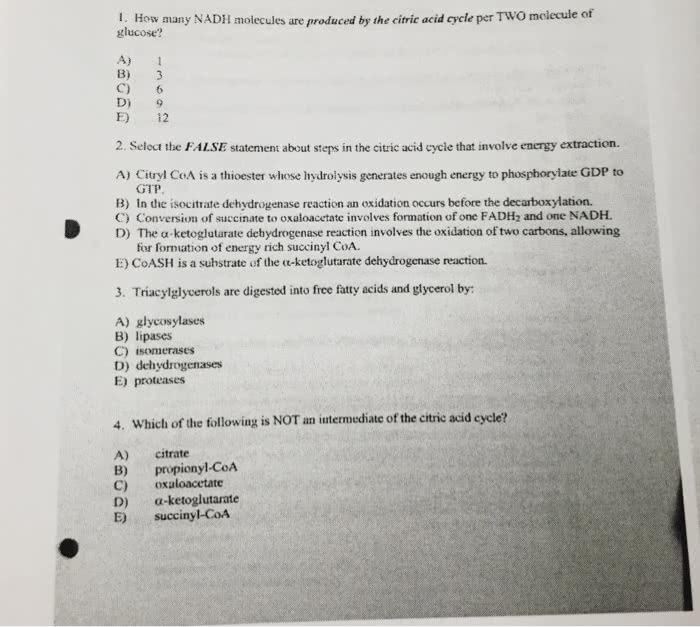BIOC 3110 Chapter Notes - Chapter 19: Succinyl Coenzyme A Synthetase, Succinyl-Coa, Citric Acid Cycle
Document Summary
The function of the citric acid cycle is the harvesting of high-energy electrons from carbon fuels. Citric acid cycle 2 stages: stage 1: oxidation of the two carbon acetyl coa to gather energy. Fatty acids, glucose and amino acids enter cycle as acetyl coa. The mechanism of citrate synthase prevents undesirable reactions: this is the initiation step of the citric acid cycle, so side reactions must be minimized, structure of enzyme: Isocitrate is oxidized and decarboxylated to alpha- ketoglutarate: first oxidation reduction step, isocitrate is oxidized, and nad+ picks up a h, this forms an unstable intermediate (oxalosuccinate), so it spontaneously loses a co2 to form alpha-ketoglutarate. At end of stage 1: 2 c atoms entered, 2 co2 have left, and 2. Nadh have left, and end product is succinyl coenzyme a (4c: stage 2: regeneration of oxaloacetate and harvesting energy rich electrons. A compound with high phosphoryl-transfer potential is generated from succinyl coenzyme a.




